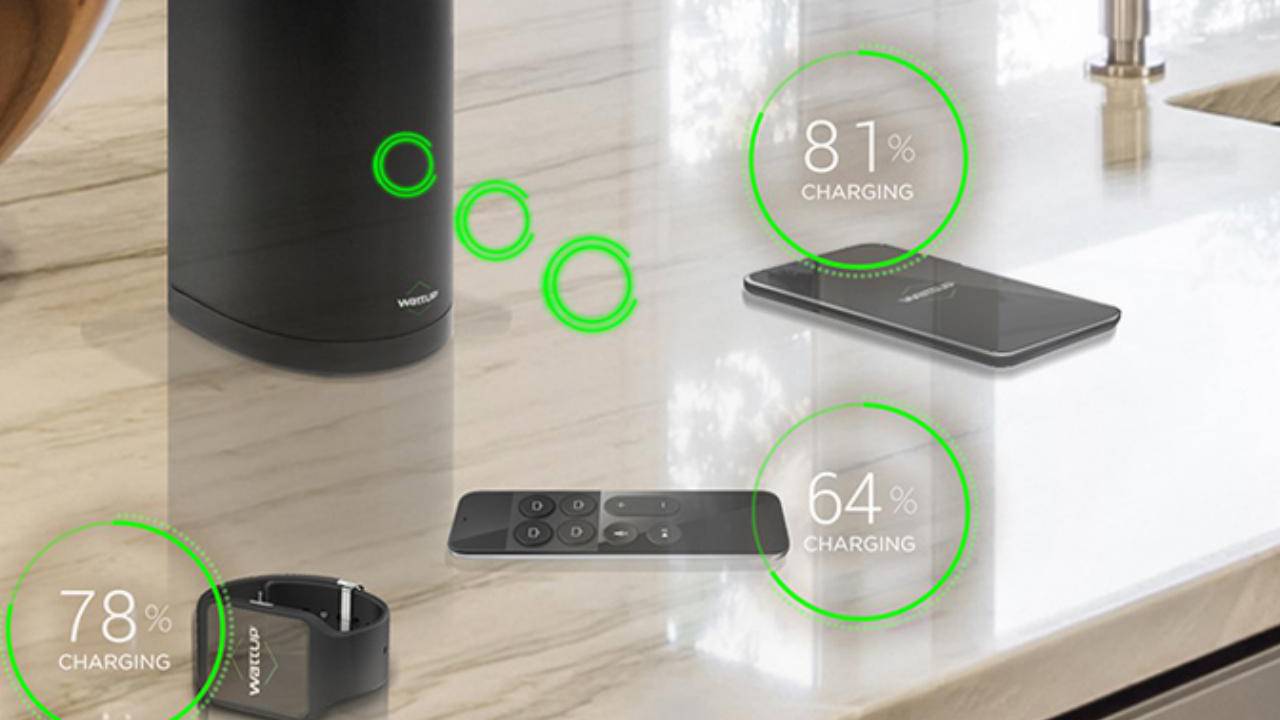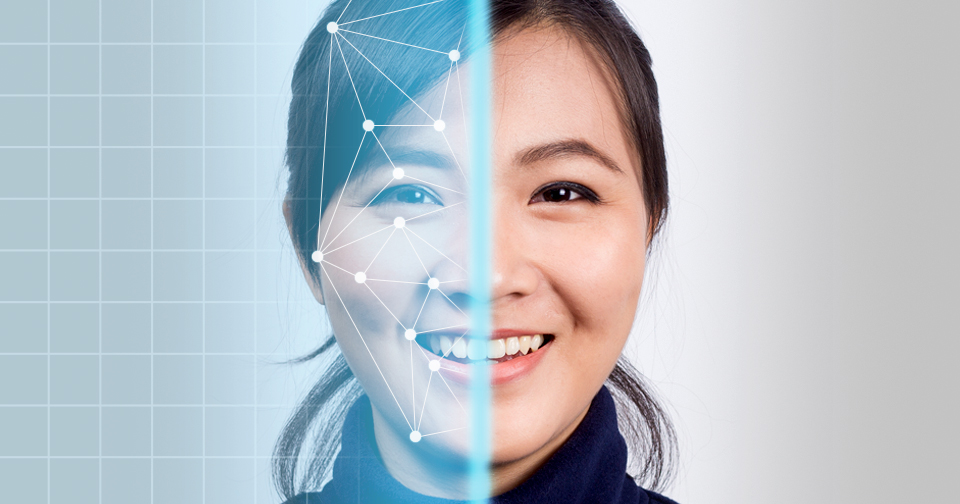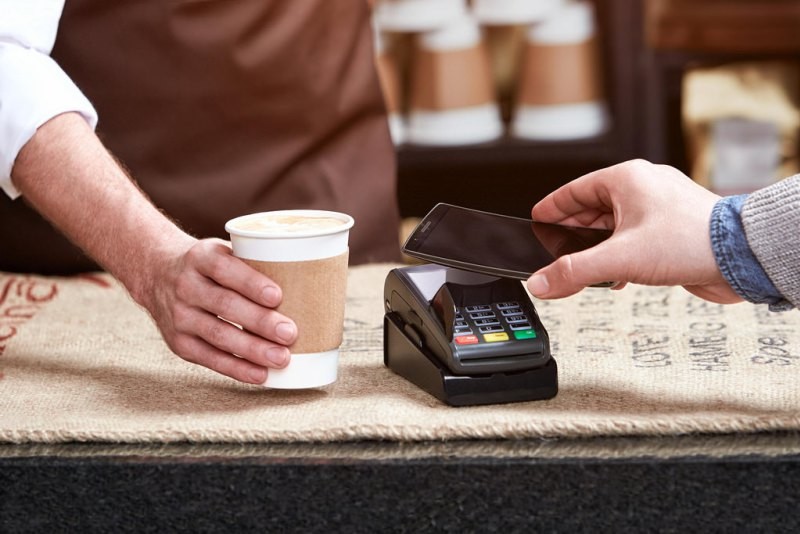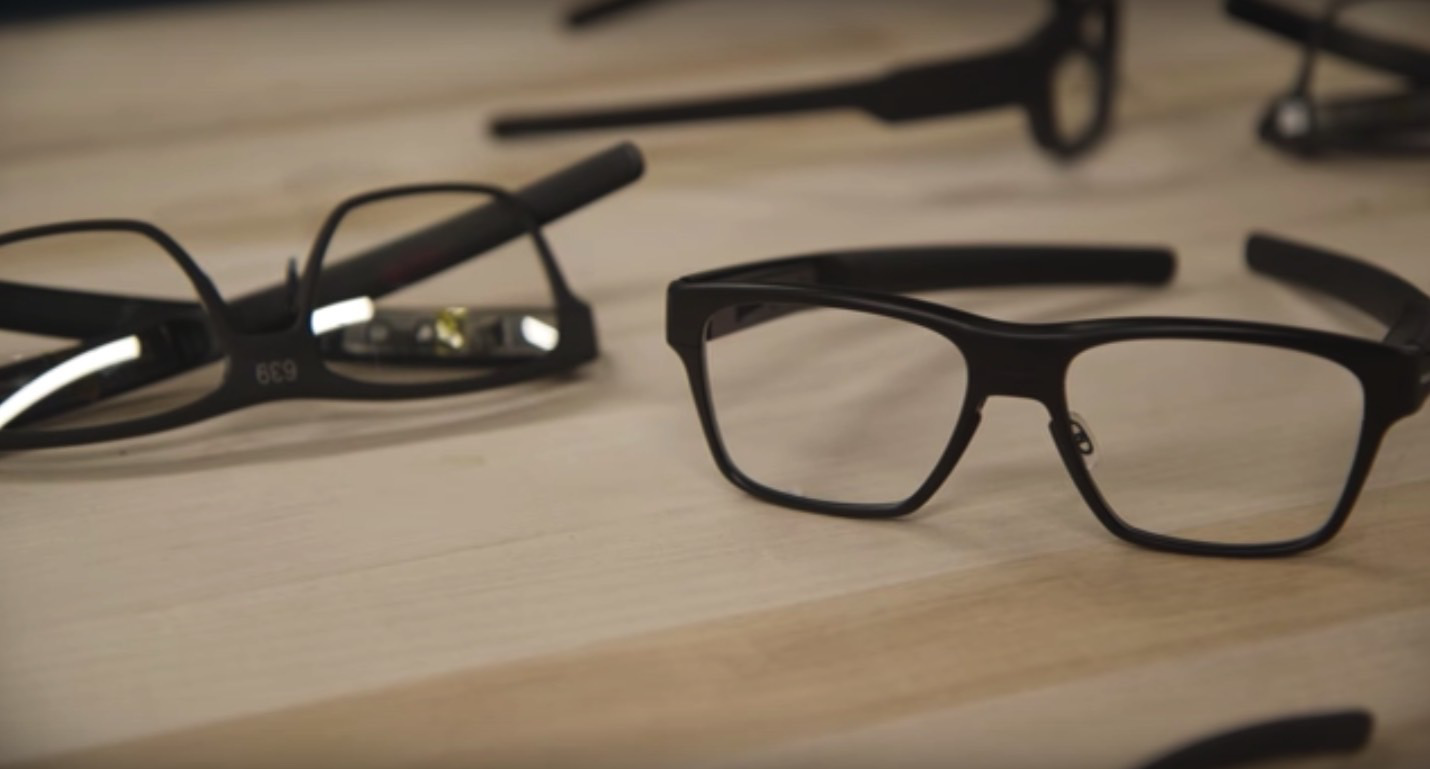
Posts Tagged ‘mobile’


Heart Rate Monitoring in the Age of Wearables
You don’t have to be a fitness fanatic to monitor your heart rate. This useful piece of data is an important marker of cardiovascular health and monitoring how it changes over time can help you maintain a healthy lifestyle and stay within the recommended resting heart rate (RHR) range for adults, which ranges from 60 to 100 beats per minute. “A high RHR could be a sign of an increased risk of cardiac risk in some situations, as the more beats your heart has to take eventually takes a toll on its overall function,” says Dr. Jason Wasfy, director of quality and analytics at Harvard-affiliated Massachusetts General Hospital Heart Center. According to a 2013 study published in the journal Heart tracked the cardiovascular health of about 3,000 men, even a slightly higher RHR can double the risk of premature death. Fortunately, we live in the age of wearables, and it has never been easier to monitor heart rate in all real-life situations. Modern wearables make heart rate monitoring convenient, affordable, and sometimes even fun. But can relatively inexpensive gadgets from young tech companies produce reliable heart rate data? Let’s find out the answer.Multiple Options
There are two main types of modern wearables that can be used for heart rate monitoring: chest straps and wrist devices. Each of these two types uses a completely different technology to measure heart rate, and each is suitable for different applications.Chest Straps
Heart rate monitoring chest straps, such as the Polar H10, have been around for a while, but they’ve never looked as sleek and haven’t been as feature-packed as they are today. Chest straps measure heart rate using a processed called electrocardiography (ECG or EKG). The same processed is used by heart rate monitors in hospitals, and it records the electrical activity of the heart over a period of time using electrodes placed over the skin. While ECG machines in hospitals use multiple electrodes placed on different spots on the chest, chest straps typically have only one or two electrodes placed either underneath the breastbone or on the inner portion of the rib cage. Even with only one or two electrodes, chest straps produce highly accurate data, which has made them the favorite heart rate monitoring wearable of serious athletes. The biggest downside of chest straps is how uncomfortable they can be after a while. Chest straps are designed to stay in place during strenuous physical activity, which means they are as tight as necessary to ensure they won’t move out of place.Wrist Devices
On the other hand, wrist devices with heart rate monitoring capabilities are just as comfortable as traditional watches, so it’s easy to wear them all day long, even during sleep, without any discomfort. Unlike chest straps, wrist devices measure heart rate using a processed called photoplethysmography (PPG). “PPG is a simple and low-cost optical technique that can be used to detect blood volume changes in the microvascular bed of tissue. It is often used non-invasively to make measurements at the skin surface,” explains Dr. John Allen, lead clinical scientist and honorary reader in microcirculation and vascular optics at Freeman Hospital in the UK. In other words, wrist devices, such as the Fitbit Charge 3, use optical sensors to see the blood pulsing through veins. Some manufacturers of heart rate monitoring wrist devices claim that their products offer the same accuracy as leading chest straps, but many experts find this hard to believe. The good news is that there’s now a growing body of scientific research that can help us decide whether wrist devices are useful health and fitness tools or just gimmicks that produce inaccurate data and mislead their users.Trusting the Numbers
A group of scientists from the University of Louisville conducted a study to compare the average heart rate readings of two different heart rate technologies (PPG vs. ECG) after an interval style cardio-based workout. After conducting a total of 30 trials, the scientists found no significant difference between the two technologies. A difference of plus or minus 5 beats per minutes appeared only around 155–160 beats per minute, with ECG being more accurate. This means that the only users of wearable heart rate monitoring devices who might benefit from ECG technology are committed athletes who frequently push their heart rate to over 160 beats per minute. “One potential cause for the inaccuracies could exist within how PPG technology works. LED lights are pulsed into the skin and are reflected to the sensor by the capillaries. Therefore, the LED rate could be an issue. If light is not being sent fast enough, and the refracted light gets absorbed or delayed in any way, then PPG would indicate a lower HR, which is what was observed around the 155 – 160 bpm thresholds,” the researchers commented. “A second potential cause for inaccuracies lies within the workout itself. The workout involved running, which has been noted to potentially lead to HR inaccuracies within PPG algorithms.” As accurate as modern wrist devices are, they are not intended to match medical devices or scientific measurement devices. Most manufacturers of fitness-oriented heart rate monitors even explicitly state that their products are not medical devices and are intended for recreational purposes only. When used with this in mind, wrist devices provide a very convenient way how to monitor heart rate throughout the day.Conclusion
Medical professionals and even health and fitness experts are preaching the benefits of heart rate monitoring, and the wearables industry has a whole range of heart rate monitors that allow anyone to stay on top of this critical marker of cardiovascular health. In recent years, researchers have been able to confirm that wrist devices are just as accurate as chest bands for regular applications, but serious athletes should still stick with ECG technology.
Facial Recognition Tech Will Soon Be Everything
In the future, your face will be your key to the world. If you look around today, you can already see this future taking shape. Facial recognition technology is popping up everywhere these days—even where you would hardly expect it. But will facial recognition bring the future we want or the future we dread?It All Started with an iPhone
No, Apple doesn’t deserve credit for inventing facial recognition (the credit goes to Woody Bledsoe, Helen Chan Wolf, Charles Bisson, and other pioneers of automated face recognition), but the company has achieved what many other companies before it have been unable to achieve: make face recognition mainstream. In 2017, Apple’s senior vice president of Software Engineering, Craig Federighi, went on stage to demonstrate Apple’s latest and greatest smartphone, the iPhone X, and showcase all of its new features. One such new feature was Face ID, a facial recognition system designed and developed by Apple exclusively for the iPhone X. It took a few tries, but Federighi eventually unlocked the iPhone X with his face and single-handedly shifted the attention of the entire tech industry to facial recognition. It has been nearly a year now since that historic demonstration, and facial recognition no longer feels new. “I think we’re seeing it ripen and fall off the tree. This seems like the moment where it’s really going to begin affecting our lives,” says Jay Stanley, a senior policy analyst with the ACLU Speech, Privacy, and Technology Project. Indeed, companies now seem to be pitching facial recognition software as the future of everything from retail to school shootings. Let’s take a closer look at some of the more talked-about use cases of facial recognition technology to better understand where it is and where it’s going.Shopping Revolution
A year before Apple made facial recognition mainstream with the iPhone X, Amazon surprised the world with its first Amazon Go grocery store. What sets the Amazon Go chain apart from Walmart or Tesco is the checkout experience. The customers simply enter the store, open the Amazon Go app, grab anything they want, and walk out—no cashiers, no self-serving checkout stations, no delays. The Amazon Go experience is made possible by the fusion of several cutting-edge technologies, including computer vision, deep learning algorithms, and sensor fusion. These technologies automate much of the purchase, check out, and payment steps associated with a retail transaction. I personally visited the Amazon Go store in Seattle this August near Amazon HQ and can attest that the experience was magic. While Amazon doesn’t use facial recognition technology in its stores (the camera in its stores are used to detect which items a customer took), it serves as an excellent example of how the future of retail could look like. Walmart, for example, has patented technology that would enable cameras to capture shoppers’ facial expressions to measure how satisfied with their shopping experience they are. Software company FaceFirst is marketing its facial recognition technology to retailers as a theft-prevention solution. According to its survey, 56 percent of shoppers are open to using facial recognition to guard against crimes such as shoplifting, which costs retailers roughly $50 billion annually. “Most large retail chains have data about known organized retail criminals that have stolen from them in the past, but natural limitations on both human memory and perception makes identifying them when they re-enter a store very difficult,” says Peter Trepp, CEO of FaceFirst. “Face recognition solves this problem by instantly identifying these individuals and alerting in-store personnel who can prevent theft or fraud from happening. That alone decreases theft and justifies having the technology on site.” By 2022, technology-enabled checkouts are expected to account for $78 billion a year in the US, up from just about $9 billion today, according to a report from Juniper Research.Big Brother Is Watching
Some schools in the United States have implemented facial recognition technology to prevent gun attacks. Officials at the Lockport school district in New York spent most of its $4 million state “Smart School” grant on a surveillance system known as Aegis. “We always have to be on our guard. We can’t let our guard down,” Lockport Superintendent Michelle T. Bradley told the Buffalo News. “If we had a student who committed some type of offense against the code of conduct, we can follow that student throughout the day to see maybe who they interacted with,” another school official added. The district’s decision to bring facial recognition to schools has sparked a nation-wide debate about the ethical aspects of the technology. In China, however, facial recognition in schools and elsewhere is already part of daily reality for most of the country’s 1,4 billion citizens. In some Chinese schools, facial recognition systems are used to monitor student performance, catch cheaters, and check whether students are paying attention in class. The system can record whether students feel happy, sad, surprised, and so on. The gathered data can then be used to evaluate the performance of the teachers. Outside schools, the Chinese government has created a massive network of surveillance cameras with facial recognition capabilities, and it uses them to locate criminals, shame jaywalkers, or even deal with toilet paper theft, among other things. The police in the country is also making use of the technology, with special glasses that scan faces in a crowd to locate criminals.Growing Privacy Concerns
It’s impossible to deny that facial recognition technology has many legitimated uses, but it’s difficult to draw a line between what’s useful and what’s intrusive. “Facial recognition is a tool, and it can be used in a variety of different ways. We can be comfortable with some uses of the tool—like, to help us unlock our phones. That doesn’t mean we should be comfortable with all uses, like surveillance by law enforcement,” says Clare Garvie, a privacy lawyer with the Center on Privacy & Technology at Georgetown Law. According to the American Civil Liberties Union, a nonprofit organization whose stated mission is to defend and preserve individual rights and liberties, facial recognition cameras don’t belong in schools since they pose serious privacy and safety risks and make students feel like they are constantly under suspicion. The potential for the abuse of facial recognition technology has even prompted Microsoft’s president, Brad Smith, to call for public action and corporate responsibility. “If we move too fast with facial recognition, we may find that people’s fundamental rights are being broken,” he wrote in a recent blog post. “This technology can catalog your photos, help reunite families or potentially be misused and abused by private companies and public authorities alike.”Conclusion
We are moving toward a future where facial recognition technology watches over every step we make. Like any technology, facial recognition can be used for both good and bad. At the moment, we are at an important crossroad that will determine which uses of facial recognition we’ll find acceptable and legal in the future and which won’t be allowed.
Top 5 Mobile Payment Trends 2018
The mobile revolution is well under way, with younger generations significantly preferring mobile devices over desktop computers. Mobile devices have changed how we interact with others, access information, entertain ourselves, and how we pay for things. According to the National Federation of Independent Business, mobile payments are predicted to be used by 56 percent of consumers by 2020, and the volume of mobile payments is expected to grow by 80 percent between 2015 and 2020. The widespread adoption of mobile payments by merchants and consumers has been enabled by the convergence of several important technological innovations, and mobile payments will continue changing as new technologies become widespread. This article describes five prominent mobile payment trends that are likely to share the future and transform how companies conduct businesses with their customers.Biometrics
This year, at CES in Las Vegas, Chinese technology company Vivo introduced the first smartphone with an on-screen fingerprint sensor. That smartphone, called Vivo X21, is now for sale, foreshadowing a future where biometric authentication is a seamless part of mobile experiences. Some of the largest smartphone manufacturers in the world, such as Apple and Samsung, have embraced facial recognition technology as a more flexible alternative to fingerprint identification. A major advantage of facial recognition over fingerprint identification is its unintrusive nature as no contact the equipment for presenting the biometric sample is necessary. Which biometric authentication technology becomes dominant remains to be seen, but it’s clear already that we’re moving toward a more secure future where mobile payments and other sensitive transactions are protected with robust security mechanisms.Retail Wallets
Since the dawn of electronic payments, retailers were always looking for ways how to minimize transaction fees. Particularly for larger retailers, debit and credit card transaction fees can be huge, so reducing them can lead to significant cost savings. One possible strategy how to retailers can avoid paying transaction fees involves the use of retail wallets, mobile apps developed by retailers that allow customers to easily pay and collect various loyalty bonuses. Unlike traditional mobile wallets, such as Apple Pay, Samsung Pay, or Google Pay, retail wallets can’t be used across stores. For this reason, they are used mostly by large retailers since it’s difficult for mom and pop businesses to not only develop a retail wallet app but also convince their customers to keep it installed on their devices. According to a research report from BI Intelligence, “Loyalty programs will be a significant driver in retailer mobile wallet adoption. Companies like Starbucks and Dunkin’ Donuts have been able to leverage their loyalty programs to acquire mobile wallet users, which, in turn, has driven store traffic and conversion rates.”Distributed Ledger Technology (DLT)
The current cross-border payment model is ripe with inefficiencies, which cause it to be slow and overly expensive. Distributed ledger technology (DLT), a consensus of replicated, shared, and synchronized digital data geographically spread across multiple sites, countries, or institutions, can change the status quo. The best-known example of distributed ledger technology is Bitcoin’s blockchain, but many other blockchains exist as well, offering improved efficiency, enhanced security, and lower costs. “Banks and FinTechs are looking at distributed ledger technology as the backbone of a new cross-border payments infrastructure to solve traditional cross-border payments inefficiencies (involving correspondent banks) resulting in faster and affordable services,” states a 2018 report from Capgemini.Alternative Payment Channels
The consumer electronics landscape is always changing in response to broader technological advancements. Faster mobile internet speeds, powerful mobile chipsets, and long-lasting miniature batteries have allowed for the emergence of wearables, and recent developments in the field of artificial intelligence have given us Amazon Echo, Google Home, and other smart home devices. Tractica forecasts an increase of the wearables devices until 2021, with total shipments for all wearable devices to 560 million in 2021, and Zion Market Research expects the global smart home market to reach approximately $53.45 billion by 2022, growing at a CAGR of slightly above 14.5 percent between 2017 and 2022. These new types of electronic devices open alternative payment channels, giving retailers the opportunity to capture several rapidly growing market segments. With these new channels, convenience is often the most important factor that decides where consumers flock to, and this is where smaller players can shine.Conclusion
New technologies are changing the face of mobile payments, making them more seamless and more available for all. Modern consumers who have grown up connected to the internet expect speed, flexibility, and security, and the retail industry and e-commerce marketplaces are working hard to meet consumers’ high expectations.
Intel Is Cancelling Its Vaunt Smart Glasses
In April, Intel has announced its plans to shut down the New Devices Group (NDG), which marks the end of its Vaunt smart glasses, which the company demonstrated in February.The Vaunt smart glasses were part of Intel’s broader effort to diversify its product offering and expand to other markets. The New Devices Group (NDG), which was formed in 2013 to make fitness trackers and smart glasses, was hit with a major layoff in 2016. Back then, Intel denied that the company was stepping back from wearables, but Intel’s struggle to gain a foothold in the wearables market was evident.
Now, after an investment of several hundred million dollars by Intel, the company is no longer denying that its foray into the wearables market hasn’t panned out as expected.
“Intel is continuously working on new technologies and experiences. Not all of these develop into a product we choose to take to market. The Superlight [an internal name for Vaunt] project is a great example where Intel developed truly differentiated, consumer augmented reality glasses. We are going to take a disciplined approach as we keep inventing and exploring new technologies, which will sometimes require tough choices when market dynamics don’t support further investment,” an Intel spokesperson told CNBC in an email.
The end of the Vaunt smart glasses isn’t exactly a surprise. “Intel has a reputation for showing off ideas that never turn into real products. It comes up with a cool concept, proves out the technology, then hopes to convince others to take that idea and turn it into a real product,” wrote Verge executive editor Dieter Bohn in February.
Intel’s intention with the Vaunt smart glasses was to make them as discreet as possible. In a sense, they were supposed to be the answer to the tsunami of privacy worries that had swept the industry after the launch of the Google Glass. Even from a close distance, the Vaunt smart glasses looked just like any regular pair of prescription glasses with a plastic frame: no visible display, no chunky battery, no touch controls, and, most importantly, no camera.
Instead, the Vaunt smart glasses featured a vertical-cavity surface-emitting laser (VCSEL), which is a semiconductor-based laser diode that emits a highly efficient optical beam vertically from its top surface. Intel used this very low-power laser to project a red, monochrome image with a resolution of 400 x 150 pixels onto a holographic reflector, which then reflected it directly onto the retina.
“We use a holographic grading embedded into the lens to reflect the correct wavelengths back to your eye. The image is called retinal projection, so the image is actually ‘painted’ into the back of your retina,” said Jerry Bautista, the lead for the team building wearable devices at Intel’s NDG. “We had to integrate very, very power-efficient light sources, MEMS devices for actually painting an image.”
Thanks to their innovative display technology and discreet looks, the Vaunt smart glasses were in a good position to become the first commercially successful smart glasses, and Intel even had a solid vision how to sell them to consumers.
”There’s something on the order of 2.5 billion people that require corrective lenses,” said Jerry Bautista. “They get their glasses from somewhere. Sixty percent of them come from eye care providers. … We would say these glasses belong in those kinds of channels. People are going to buy them like they buy their glasses today.”
Clearly, that plan didn’t pan out as intended, and Intel isn’t the only company in wearables that’s struggling to meet its goals. The wearable market would have actually shrunken in the fourth quarter of this year if it weren’t for Apple, whose shipments grew by 58 percent to 8 million devices, up from 5.1 million a year earlier, according to research firm International Data Corp. Fitbit’s shipments declined by 17 percent to 5.4 million in the quarter, and Xiaomi’s shipments fell by 5 percent to 4.9 million in the same quarter.
Despite the current state of the wearables market, the global wearables sales revenue is still projected to exceed 40 billion by 2021, compared to a little over 30 billion in 2018. According to a report in the FT, Amazon is working on building a pair of smart glasses to house its Alexa voice assistant, Google is focusing on helping professionals in manufacturing, logistics, and healthcare be more productive with its Glass Enterprise Edition, and Microsoft has demonstrated a number of real-world applications of its HoloLens headset. HoloLens however still carries a large price tag per unit and is painful to wear for over an hour which creates a barrier for industrial / enterprise applications.
It seems then that Intel’s failure simply indicates that smart glasses are not yet ready to leave the confines of factories, offices, and our homes. “The field of view, the quality of the display itself, it’s not there yet. We [Apple] don’t give a rat’s about being first. We want to be the best, and give people a great experience. But now anything you would see on the market any time soon would not be something any of us would be satisfied with. Nor do I think the vast majority of people would be satisfied,” said Apple’s CEO Tim Cook last year.
Focusing too much on the technology, this is something that Intel failed to see until the company could no longer afford to ignore the reality. Unfortunately, it appears we are still a few years out from that killer HUD that marries consumer price points, wearability, and functionality.